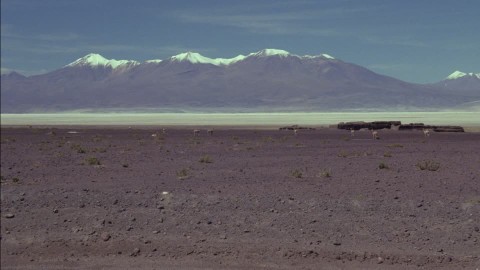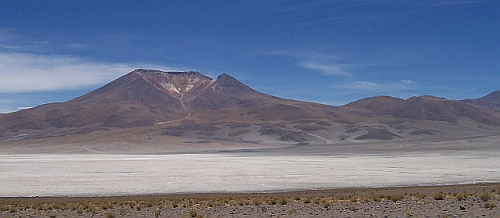
Orestias ascotanensis
FAMILY
Cyprinodontidae
TAXONOMY
Orestias ascotanensis Parenti, 1984, Salar de Ascotan, Chile.
OTHER COMMON NAMES
English: Lake Ascotan Mountain killifish
PHYSICAL CHARACTERISTICS
Grows to 2.4 in (6 cm) in length. A member of the Orestias
agassizii species complex. Basically olive-green in color, with
anal and dorsal fins set back and over each other. The lower
jaw turns up. Males and females are robust, with a relatively
large head compared with the heads of other species in the
species complex. Sexually dimorphic and dichromatic. Males
are smaller than females and more slender. Breeding males
have a bright yellow overlay on the sides and the anal and dorsal
fins. Females are larger and more rounded than males. The
fins and body are mottled, tending toward more uniform coloration
when they are very mature.
DISTRIBUTION
Known only from Salar de Ascotan, a small saline lake in
northwestern Chile, the southernmost population of Orestias.
HABITAT
The species is found in the slightly brackish water of Lake Ascotan
and its associated ponds, where Ruppia filifolia is the most
common vegetation.
BEHAVIOR
In 1995, for the purpose of studying captive breeding, Jara,
Soto, and Palma set up four males and four females in a
planted 3 gallon (12 L) aquarium with no reported aggression
among the males. The males did not persistently court the females,
as happens with many other killifishes; some time was
spent apart, feeding and moving about the aquarium.
FEEDING ECOLOGY AND DIET
In aquaria the species readily feeds on insect larva, crustaceans,
and commercial flake food, indicating that in the wild it is a
benthopelagic feeder on aquatic invertebrates.
REPRODUCTIVE BIOLOGY
This species is a typical plant spawner. At the lake, eggs were
found attached to the vegetation. In aquaria the male courts
the female by approaching from beneath and nudging her
pelvic area. The two then move to the vegetation. With the
pair positioned side by side with their vents close together, the
male assumes a typical S-shape posture. The female releases
two or three adhesive eggs, which are fertilized by the male.
The filamentous eggs adhere to the vegetation. The incubation
time is about 17 days at 63–68°F (17–20°C).
CONSERVATION STATUS
Not listed by the IUCN.
SIGNIFICANCE TO HUMANS
None known.
Photo Gallery of - Ascotan Mountain killifish




 Animalia Life
Animalia Life